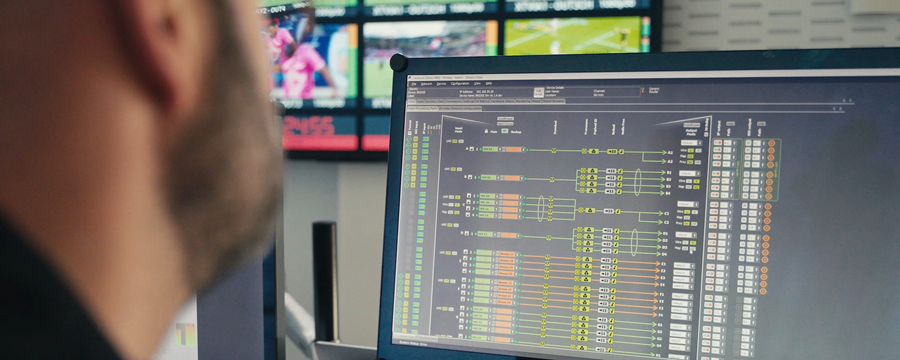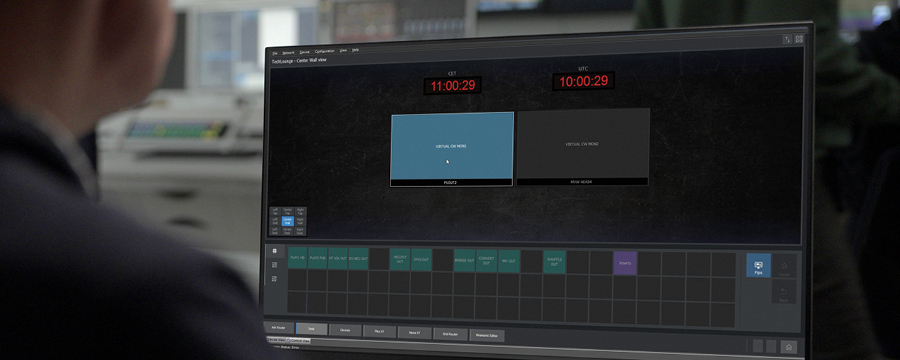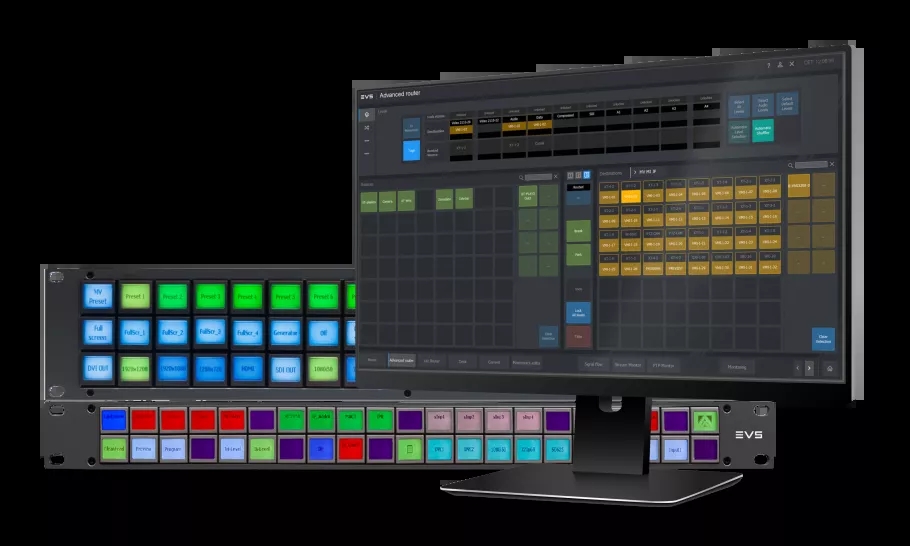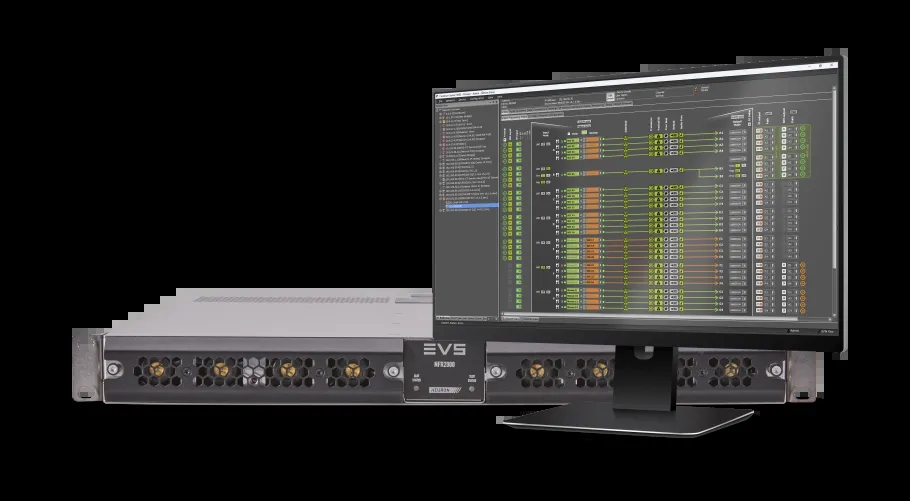Telefe Argentina begins strategic migration from SDI to IP with EVS Strada

- 04 September 2025
Versión en español Versão em português
According to Guillermo Niemetz, Telefe’s Engineering Supervisor, the strategic decision is based on keeping pace with the evolution of video transport technologies toward IP environments, as well as on the maturity level these solutions have achieved in the broadcast world.
"The channel currently operates entirely in SDI, and the industry trend is decisively moving toward IP architectures, which drives us to adopt this technological renewal to align with the most modern standards and workflows," he explains.
Telefe relocated its operations in 2016 from the center of Buenos Aires City to the northern part of the province, and since then has had a 576x1152 SDI video router and a 288x288 MADI/AES router, controlled by an integrated NV9000 system.
Niemetz explains that due to the size and importance of the core, the migration process will begin at the system’s nerve center—not from production, as is usual at other channels. "In our case, we start with the most robust and critical part, ensuring that the router, a fundamental piece for operational flow, integrates into the new IP architecture without compromising service continuity," he details.
The initial plan includes purchasing EVS’s Cerebrum control system, Arista Networks 7280R3 switches functioning as spine/leaf, and EVS Neuron gateways for bidirectional SDI-to-IP (SMPTE 2110) conversion. This way, the new video, audio, and data IP backbone begins to coexist with the SDI legacy in a hybrid operation, explains Telefe’s executive.

Neuron UI - IP Gateway and conversion
 | According to Eduardo De Nucci, CEO at Viditec—integrator and exclusive EVS partner in Argentina—the critical point was adopting a platform capable of simultaneously controlling both IP and legacy SDI environments. "The EVS solution efficiently controls the SDI routers and all Ethernet switches in the SMPTE 2110 world, operating in a hybrid migration system," he explains. |
Niemetz emphasizes that Cerebrum was chosen after comparative testing: "We tested multiple brands. They were among the few able to control, from the orchestrator, our SDI and AES matrix and everything else we have here. That was fundamental; it was a dealbreaker."
Another differentiator was simplicity and efficiency: EVS’s broadcast control system uses three servers compared to up to six from other vendors, and its SDI-IP gateways have high density per rack unit, saving space, energy, and maintenance costs. Additionally, SNMP monitoring and broad API support offer full integration and control of different market products.
Strada is a flexible router solution for both IP and SDI, scalable from small setups to large multi-site operations. With Cerebrum at its core, it offers a unified environment for control and orchestration.
Strada’s architecture allows managing ST 2110, SDI, and hybrid routing with minimal latency, high availability, and end-to-end redundancy. "With Strada, we can operate today in SDI, IP, or hybrid, and gradually transition without compromising daily operations," explains Niemetz.
 | The system supports multiple protocols—including NMOS, SDP, and Ember+—and offers a protocol-agnostic licensing model: instead of specific drivers, the broadcaster acquires “generic points” usable with any compatible equipment across more than 250 protocols, explains Alfredo Cabrera, EVS VP Sales Latam. |
Cerebrum is a complete Broadcast Control System (BCS) capable of "controlling, configuring, orchestrating, and monitoring any broadcast environment you want, all from a single umbrella system," says Cabrera. Designed for small or large operations, SDI or IP, it is highly scalable and prepared for current and future demands.

Cerebrum UI - Device control and IP routing
Key benefits include:
- Adaptability to any scenario: from simple setups to complex multi-site workflows, with wide compatibility via APIs and protocols.
- Simplified advanced routing: with the Routemaster core, integrating and controlling any workflow, SDI, IP, or hybrid.
- License-agnostic: flexible license use for any device.
- Highly customizable interface: ability to modify templates, create custom interfaces, and configure personalized control panels, even offline.
At Telefe, Cerebrum replaces functions previously handled by other systems, expanding device visualization, alarms, and remote control capabilities. "Cerebrum gives us that and much more. We can do a lot of things. It’s really powerful," says Niemetz.
Implementation involved two months of preparatory meetings between Telefe, Viditec, and EVS, and only two weeks on site: five days for configuration and five days for training technical and operational teams, notes Alfredo Cabrera.
Niemetz emphasizes that "EVS staff, when installing this first part, gave us a small course that was important. For now, our installation is very small, almost like a lab, which helps us practice and learn," adding that the transition is not only technological but also cultural.
The IP operation removes familiar elements such as the patch panel, requiring new monitoring tools, including Arista CloudVision, among others. "With the patch panel gone on the operational side, the team feels blind, and these tools become essential," comments Telefe’s executive.
The goal is to reach 100% IP in approximately five years. The scope includes production, postproduction, monitoring, distribution, and integration with streaming workflows.
For Telefe, this change places the broadcaster in a privileged position to leverage future IP solutions. "Working with state-of-the-art IP technology puts the channel in a position to benefit from any new or future IP solutions in the coming years," affirms the executive.
Viditec played a decisive role as integrator, connecting Telefe’s needs with EVS’s proposal. Niemetz summarizes: "We are truly impressed with the way EVS, together with Viditec, carried out this project with so much professionalism and passion."
The result is a solid foundation for Telefe’s technical operation to become increasingly flexible, scalable, and ready for the future of broadcasting. As De Nucci highlights: "This is a step-by-step process, constrained by budget, time, and learning… but once everything is in IP, a world of possibilities opens up."

